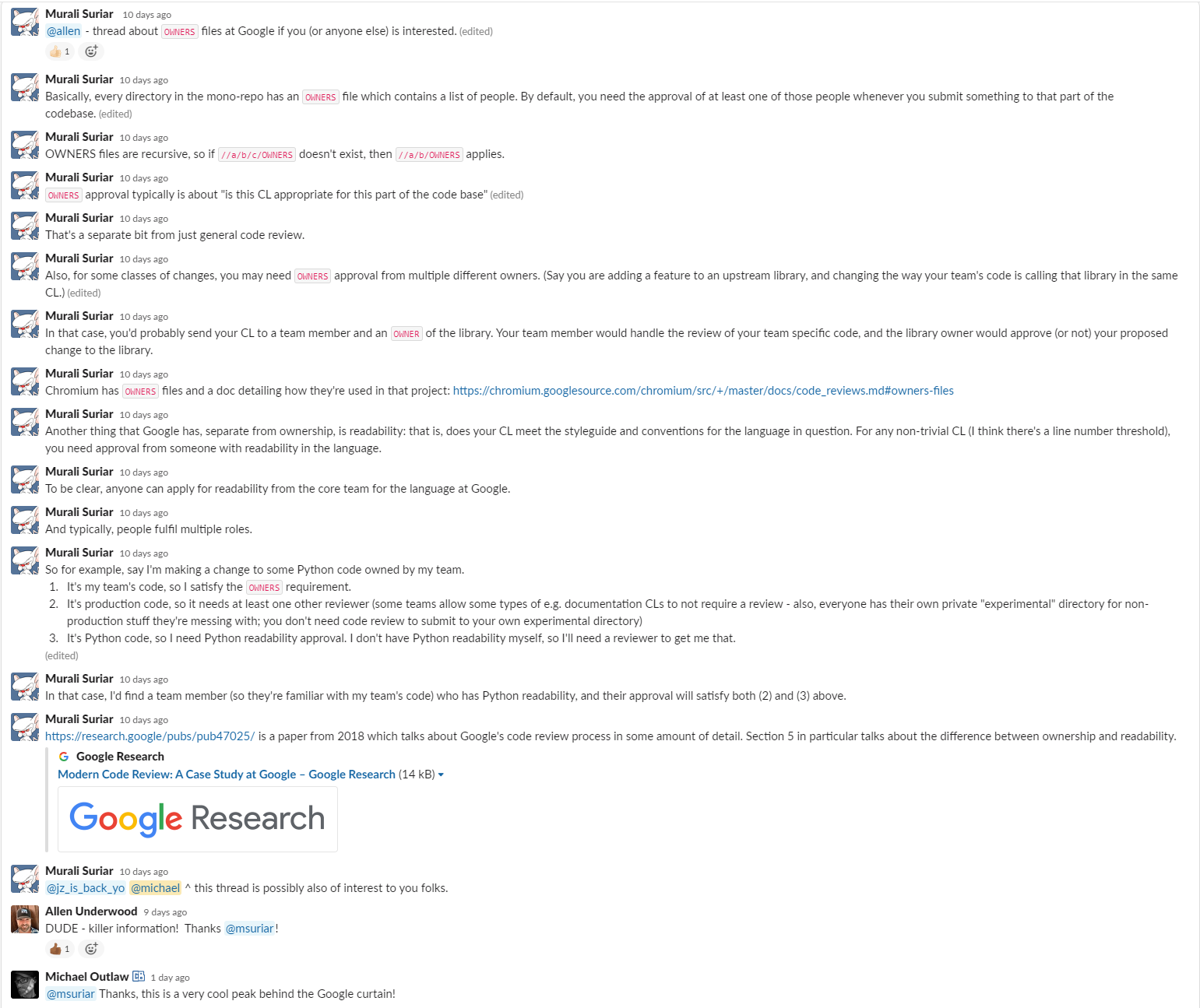Mon, 25 May 2020
We learn what to look for in a code review while reviewing Google’s engineering practices documentation as Michael relates patterns to choo-choos, Joe has a “weird voice”, and Allen has a new favorite portion of the show. Are you reading this via your podcast player? You can find this episode’s full show notes at https://www.codingblocks.net/episode133 where you can also join the conversation. Sponsors
Survey SaysNews
// TODO: Insert Clever Subtitle HereDesign
Functionality
Complexity
Tests
Naming
Comments
Style
Consistency
Documentation
Every Line
Context
Good Things
Resources We Like
Tip of the Week
Direct download: coding-blocks-episode-133.mp3
Category:Software Development -- posted at: 8:01pm EDT |
Sun, 10 May 2020
We dig into Google’s engineering practices documentation as we learn how to code review while Michael, er, Fives is done with proper nouns, Allen can’t get his pull request approved, and Joe prefers to take the average of his code reviews. In case you’re reading this via your podcast player, this episode’s full show notes can be found at https://www.codingblocks.net/episode132. Be sure to check it out and join the conversation. Sponsors
Survey SaysNews
How to Code ReviewCode Review Developer Guide
What should code reviewers look for?
Picking the Best Reviewers
In Person Reviews
How to do a Code ReviewThe Standard of a Code ReviewThe purpose of the code review is to make sure code quality is improving over time.
Reviewers should favor approving the changes when the code health is improved even if the changes aren’t perfect. There’s no such thing as perfect code, just better code.
Code that worsens the overall quality or health of a system should not be admitted unless it’s under extreme/emergency circumstances. What constitutes an emergency?A small change that:
What does not constitute an emergency?
MentoringCode reviews can absolutely be used as a tool for mentoring, for example teaching design patterns, explaining algorithms, etc., but if it’s not something that needs to be changed for the PR to be completed, note it as a “Nit” or “Note”. Principles
Resolving Conflicts
NEVER let a change sit around just because the reviewer and coder can’t come to an agreement. Resources We Like
Tip of the Week
Direct download: coding-blocks-episode-132.mp3
Category:Software Development -- posted at: 9:52pm EDT |
Coding Blocks

Categories
application securitysource control
Software Development
general
Database
testing
programming
Javascript
tools
Archives
AprilMarch
February
January
December
November
October
September
August
July
June
May
April
March
February
January
December
November
October
September
August
July
June
May
April
March
February
January
December
November
October
September
August
July
June
May
April
March
February
January
December
November
October
September
August
July
June
May
April
March
February
January
December
November
October
September
August
July
June
May
April
March
February
January
December
November
October
September
August
July
June
May
April
March
February
January
December
November
October
September
August
July
June
May
April
March
February
January
December
November
October
September
August
July
June
April
March
February
January
December
November
October
September
August
July
June
May
April
March
February
January
December
November
October
September
August
July
June
May
April
March
January
December
November
October
September
| S | M | T | W | T | F | S |
|---|---|---|---|---|---|---|
| 1 | 2 | |||||
| 3 | 4 | 5 | 6 | 7 | 8 | 9 |
| 10 | 11 | 12 | 13 | 14 | 15 | 16 |
| 17 | 18 | 19 | 20 | 21 | 22 | 23 |
| 24 | 25 | 26 | 27 | 28 | 29 | 30 |
| 31 | ||||||
Syndication



